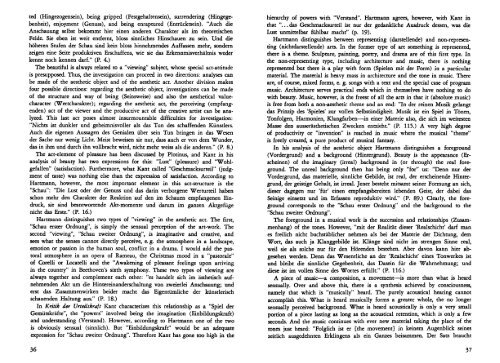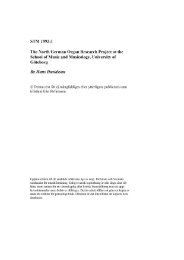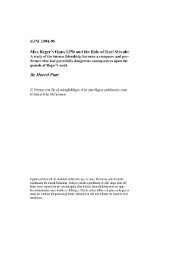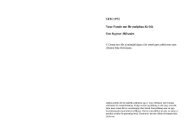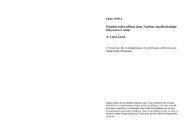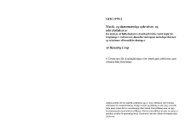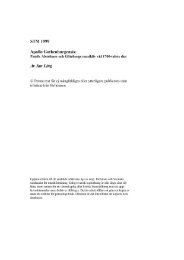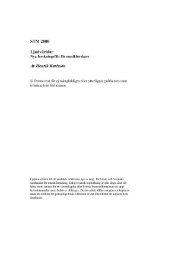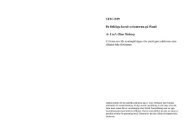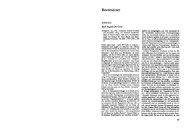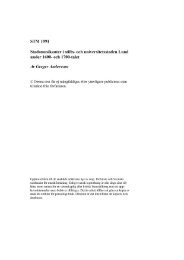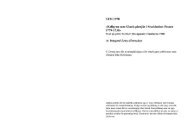Nicolai
Nicolai
Nicolai
Create successful ePaper yourself
Turn your PDF publications into a flip-book with our unique Google optimized e-Paper software.
ted (Hingezogensein), being gripped (Festgehaltensein), surrendering (Hingege-<br />
benheit), enjoyment (Genuss), and being enraptured (Entrücktsein). ”Auch die<br />
Anschauung selbst bekommt hier einen anderen Charakter als im theoretischen<br />
Felde. Sie eben ist weit entfernt, bloss sinnliches Hinschauen zu sein. Und die<br />
höheren Stufen der Schau sind kein bloss hinnehmendes Auffassen mehr, sondern<br />
zeigen eine Seite produktiven Erschaffens, wie sie das Erkenntnisverhaltnis weder<br />
kennt noch kennen darf.” (P. 4.)<br />
The beautiful is always related to a ”viewing” subject, whose special act-attirude<br />
is presupposed. Thus, the investigation can proceed in two directions: analyses can<br />
be made of the aesthetic object and of the aesthetic act. Another division makes<br />
four possible directions: regarding the aesthetic object, investigations can be made<br />
of the structure and way of being (Seinsweise) and also the aesthetical value-<br />
character (Wertcharakter); regarding the aesthetic act, the perceiving (empfang-<br />
enden) act of the viewer and the productive act of the creative artist can be ana-<br />
lyzed. This last act poses almost insurmountable difficulties for investigation:<br />
”Nichts ist dunkler und geheimnisvoller als das Tun des schaffenden Künstlers.<br />
Auch die eigenen Aussagen des Genialen über sein Tun bringen in das Wesen<br />
der Sache nur wenig Licht. Meist beweisen sie nur, dass auch er von dem Wunder,<br />
das in ihm und durch ihn vollbracht wird, nicht mehr weiss ais die anderen.” (P. 8.)<br />
The act-element of pleasure has been discussed by Plotinus, and Kant in his<br />
analysis of beauty has two expressions for this: ”Lust” (pleasure) and ”Wohl-<br />
gefallen’’ (satisfaction). Furthermore, what Kant called ”Geschmacksurteil” ( judg-<br />
ment of taste) was nothing else than the expression of satisfaction. According to<br />
Hartmann, however, the most important element in this act-structure is the<br />
”Schau”: ”Die Lust oder der Genuss und das darin verborgene Werturteil haben<br />
schon mehr den Charakter der Reaktion auf den im Schauen empfangenen Ein-<br />
druck, sie sind beantwortende Akt-momente und darum im ganzen Aktgefüge<br />
nicht das Erste.” (P. 16.)<br />
Hartmann distinguishes two types of ”viewing” in the aesthetic act. The first,<br />
”Schau erster Ordnung”, is simply the sensual perception of the art-work. The<br />
second ”viewing”, ”Schau zweiter Ordnung”, is imaginative and creative, and<br />
sees what the senses cannot directly perceive, e.g. the atmosphere in a landscape,<br />
emotion or passion in the human soul, conflict in a drama. I would add the pas-<br />
toral atmosphere in an opera of Rameau, the Christmas mood in a ”pastorale”<br />
of Corelli or Locatelli and the ”Awakening of pleasant feelings upon arriving<br />
in the country” in Beethoven’s sixth symphony. These two types of viewing are<br />
always together and complement each other: ”es handelt sich im ästhetisch auf-<br />
nehmenden Akt um die Hintereinanderschaltung von zweierlei Anschauung; und<br />
erst das Zusammenwirken beider macht das Eigentümliche der künstlerisch<br />
schauenden Haltung aua” (P. 18.)<br />
In Kritik der Urteilskraft Kant characterizes this relationship as a ”Spiel der<br />
Gemütskräfte”, the ”powers” involved being the imagination (Einbildungskraft)<br />
and understanding (Verstand). However, according to Hartmann one of the two<br />
is obviously sensual (sinnlich). But ”Einbildungskraft” would be an adequate<br />
expression for ’’Schau zweiter Ordnung”. Therefore Kant has gone too high in the<br />
hierarchy of powers with ”Verstand”. Hartmann agrees, however, with Kant in<br />
that ”...das Geschmacksurteil ist nur der gedankliche Ausdruck dessen, was die<br />
Lust unmittelbar fühlbar macht” (p. 19).<br />
Hartmann distinguishes between representing (darstellende) and non-represen-<br />
ting (nichtdarstellende) arts. In the former type of art something is represented,<br />
there is a theme. Sculpture, painting, poetry, and drama are of this first type. In<br />
the non-representing type, including architecture and music, there is nothing<br />
represented but there is a play with form (Spielen mit der Form) in a particular<br />
material. The material is heavy mass in architecture and the tone in music. There<br />
are, of course, mixed forms, e. g. songs with a text and the special case of program<br />
music. Architecture serves practical ends which in themselves have nothing to do<br />
with beauty. Music, however, is the freest of all the arts in that it (absolute music)<br />
is free from both a non-aesthetic theme and an end: ”In der reinen Musik gelangt<br />
das Prinzip des ’Spieles’ zur vollen Selbständigkeit. Musik ist ein Spiel in Tönen,<br />
Tonfolgen, Harmonien, Klangfarben-in einer Materie also, die sich im weitesten<br />
Masse den ausserästhetischen Zwecken entzieht.” (P. 115.) A very high degree<br />
of productivity or ”invention” is reached in music where the musical ”theme”<br />
is freely created, a pure product of musical fantasy.<br />
In his analysis of the aesthetic object Hartmann distinguishes a foreground<br />
(Vordergrund) and a background (Hintergrund). Beauty is the appearance (Er-<br />
scheinen) of the imaginary (irreal) background in (or through) the real fore-<br />
ground. The unreal background then has being only ”for” us: ”Denn nur der<br />
Vordergrund, das materielle, sinnliche Gebilde, ist real, der erscheinende Hinter-<br />
grund, der geistige Gehalt, ist irreal. Jener besteht mitsamt seiner Formung an sich,<br />
dieser dagegen nur ’fur’ einen empfangsbereiten lebenden Geist, der dabei das<br />
Seinige einsetzt und im Erfassen reproduktiv wird.” (P. 89.) Clearly, the fore-<br />
ground corresponds to the ”Schau erster Ordnung” and the background to the<br />
”Schau zweiter Ordnung”.<br />
The foreground in a musical work is the succession and relationships (Zusam-<br />
menhang) of the tones. However, ”mit der Realität dieser ’Realschicht’ darf man<br />
es freilich nicht buchstäblicher nehmen als bei der Materie der Dichtung, dem<br />
Wort, das auch ja Klanggebilde ist. Klänge sind nicht im strengen Sinne real,<br />
weil sie als solche nur für den Hörenden bestehen. Aber davon kann hier ab-<br />
gesehen werden. Denn das Wesentliche an der ’Realschicht’ eines Tonwerkes ist<br />
und bleibt die sinnliche Gegebenheit, das Dasein für die Wahrnehmung; und<br />
diese ist im vollen Sinne des Wortes erfüllt.” (P. 116.)<br />
A piece of music-a composition, a movement-is more than what is heard<br />
sensually. Over and above this, there is a synthesis achieved by consciousness,<br />
namely that which is ”musically” heard. The purely acoustical hearing cannot<br />
accomplish this. What is heard musically forms a greater whole, the no longer<br />
sensually perceived background. What is heard acoustically is only a very small<br />
portion of a piece lasting as long as the acoustical retention, which is only a few<br />
seconds. And the music continues with ever new material taking the place of the<br />
tones just heard: ”Folglich ist er {the movement) in keinem Augenblick seines<br />
zeitlich ausgedehnten Erklingens als ein Ganzes beisammen. Der Satz braucht


